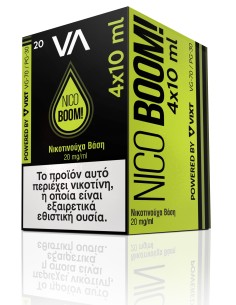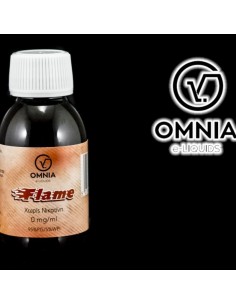Shopping Cart

DIY Mixing calculator
It's been a long time since the choice of e-liquids was narrowed down to just a few brands. In fact, nowadays, alongside the purchase of ready-made premium e-liquids, self-mixing is also proliferating.
Although many people think of it as a great alchemy, the opposite is true. There is nothing simpler. As a rule of thumb, if you can make water with syrup, you can mix your own e-liquid using the same principle.
There are many reasons to embrace this trend, but the most important is the resulting price. Compared to conventional cigarettes, the price of a ready-made e-liquid that lasts for a longer period of time is negligible. However, mixing will reduce the cost even further and this allows you to buy a lot more flavours. This brings you closer to finding the perfect one for all-day vaping.
Another equally important aspect to custom blending is the individual parameters of the base, i.e. the nicotine (or nicotine-free) flavorless base. You just need to find your ideal nicotine amount and density.
With a base prepared in this way, every blended e-liquid will be exactly to your liking. The density is different for each type of atomizer, so if your atomizer has smaller channels for e-liquid delivery, you will need a thinner e-liquid to make the ignition head suck comfortably. Conversely, with larger channels, you'll need a thicker base so that the glowing head doesn't get overwhelmed by the e-liquid and cause unpleasant sizzling in your mouth.
The resulting base density is achieved by the ratio of the following ingredients:
Propylene Glycol (PG) - is thin, used as the main flavour carrier, forms little vapour.
Glycerin(VG) - is very dense, used to form a very thick vapour, carries flavour poorly
(demineralised water) - used to dilute the density of the e-liquid where appropriate
The first priority is therefore to choose the appropriate base ratio according to your own atomiser. For example, for a MTL - mouth to lung - atomizer, which usually has smaller suction channels, a base ratio of 50%PG : 50%VG is sufficient. For atomizers with larger suction channels (mostly DL - directly to lungs vaping) it is possible to use up to 100%VG (mostly for people who are allergic to Propylene Glycol, the resulting e-liquid needs more flavour), but more popular are ratios of 70%VG : 30%PG or 80%VG : 20%PG, where the high vapour density due to the PG content still gives a true flavour rendition.
You can buy the base ratios listed directly from several different brands ready-made on our e-shop, but you can also buy individual ingredients, which you can find here and mix the final ratio entirely to suit yourself. All you need to do this is a standard kitchen measuring cup.
As far as adding nicotine to the base is concerned, boosters are used for this purpose. These most often contain the maximum nicotine ratio according to EU regulations, i.e. 20mg/ml in a 10ml bottle. To get to the required nicotine strength, use the following calculator to work out
Although many people think of it as a great alchemy, the opposite is true. There is nothing simpler. As a rule of thumb, if you can make water with syrup, you can mix your own e-liquid using the same principle.
There are many reasons to embrace this trend, but the most important is the resulting price. Compared to conventional cigarettes, the price of a ready-made e-liquid that lasts for a longer period of time is negligible. However, mixing will reduce the cost even further and this allows you to buy a lot more flavours. This brings you closer to finding the perfect one for all-day vaping.
Another equally important aspect to custom blending is the individual parameters of the base, i.e. the nicotine (or nicotine-free) flavorless base. You just need to find your ideal nicotine amount and density.
With a base prepared in this way, every blended e-liquid will be exactly to your liking. The density is different for each type of atomizer, so if your atomizer has smaller channels for e-liquid delivery, you will need a thinner e-liquid to make the ignition head suck comfortably. Conversely, with larger channels, you'll need a thicker base so that the glowing head doesn't get overwhelmed by the e-liquid and cause unpleasant sizzling in your mouth.
The resulting base density is achieved by the ratio of the following ingredients:
Propylene Glycol (PG) - is thin, used as the main flavour carrier, forms little vapour.
Glycerin(VG) - is very dense, used to form a very thick vapour, carries flavour poorly
(demineralised water) - used to dilute the density of the e-liquid where appropriate
The first priority is therefore to choose the appropriate base ratio according to your own atomiser. For example, for a MTL - mouth to lung - atomizer, which usually has smaller suction channels, a base ratio of 50%PG : 50%VG is sufficient. For atomizers with larger suction channels (mostly DL - directly to lungs vaping) it is possible to use up to 100%VG (mostly for people who are allergic to Propylene Glycol, the resulting e-liquid needs more flavour), but more popular are ratios of 70%VG : 30%PG or 80%VG : 20%PG, where the high vapour density due to the PG content still gives a true flavour rendition.
You can buy the base ratios listed directly from several different brands ready-made on our e-shop, but you can also buy individual ingredients, which you can find here and mix the final ratio entirely to suit yourself. All you need to do this is a standard kitchen measuring cup.
As far as adding nicotine to the base is concerned, boosters are used for this purpose. These most often contain the maximum nicotine ratio according to EU regulations, i.e. 20mg/ml in a 10ml bottle. To get to the required nicotine strength, use the following calculator to work out
Our new calculator will now help you not only before mixing, but also before buying. So if you're not sure how much you'll need for a given flavour or shake & vape flavour, enter the parameters into the calculator and you'll get the exact recipe.



















Comments (0)